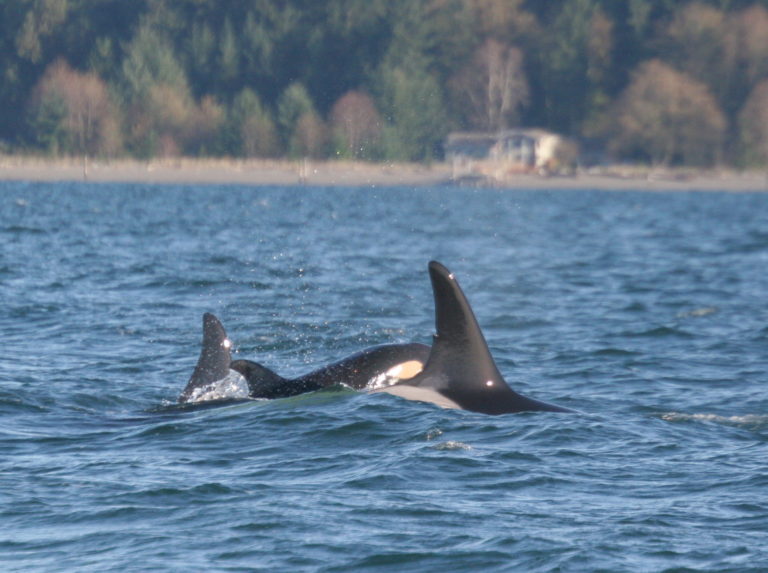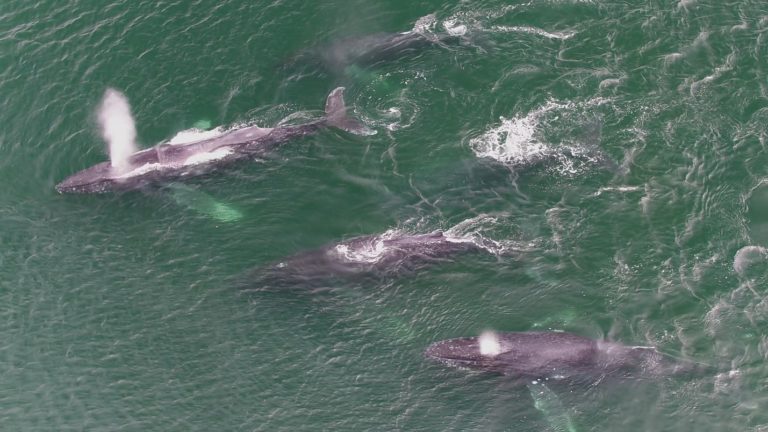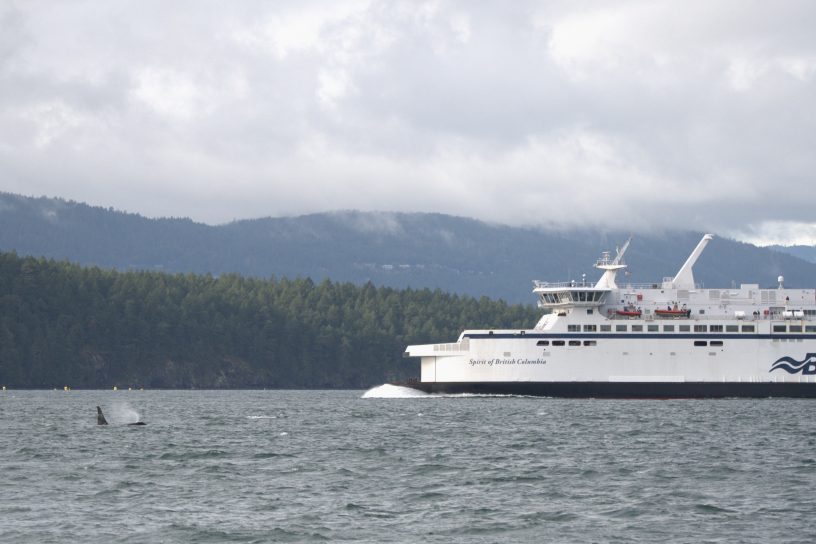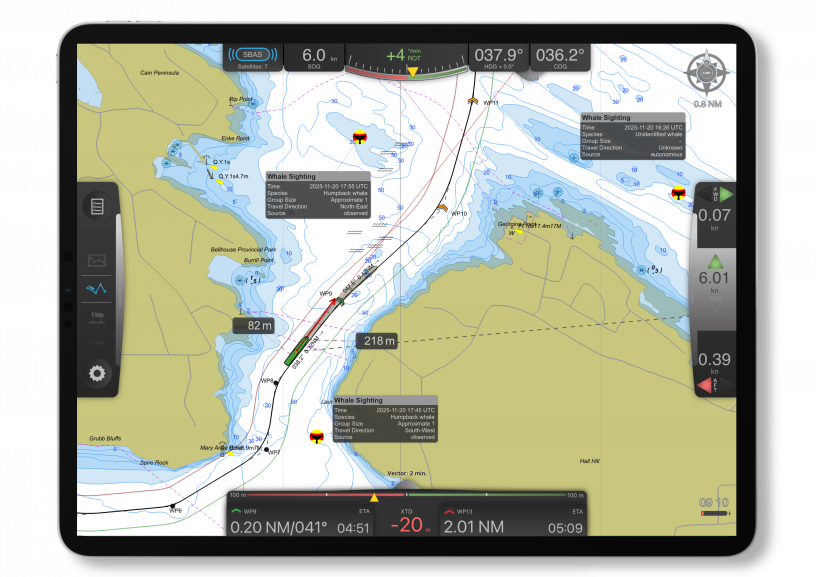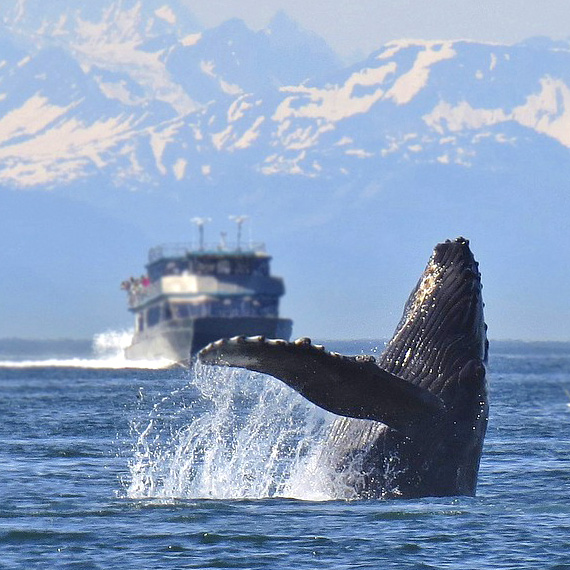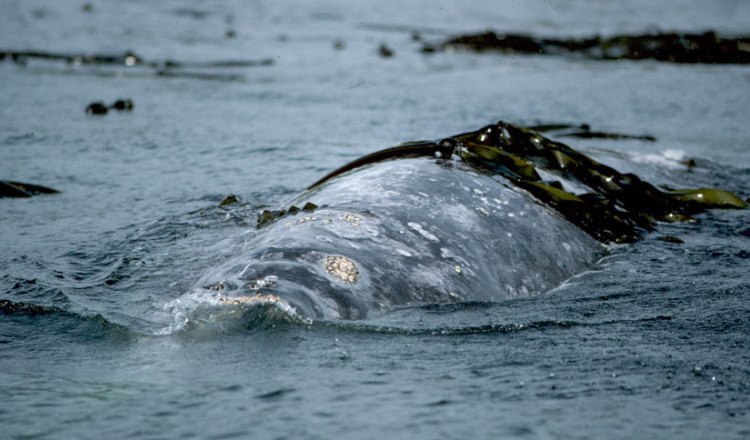
Here Come the Grey Whales
It’s official, spring is upon us! While the season brings a suite of familiar signs: crocuses, buds on trees, and bird song, if you turn your eyes to the water, you may also be lucky enough to witness the first wave of migratory whales – grey whales.
Grey whales are large, measuring upwards of 14 metres, slightly longer than an average school bus. They can be easily recognized by their mottled grey colour, lack of a dorsal fin, and the presence of barnacles on their heads, which gives them a much crustier look than other whales. Grey whale are particularly spectacular, as they make one of the longest migrations of any mammal on earth. From their calving grounds near Baja Mexico, grey whales travel up to 9,000 kilometres to the waters of the Bering Sea. That is the equivalent of walking across Canada from Victoria to Halifax and back.

This marathon migration is driven by one thing: food. Cold water is much richer in food than tropical seas. Grey whales rely almost entirely on their fat reserves as an energy source during their winters and migrations so they build up their blubber by feasting through the summer months. Grey whales are baleen whales, meaning that instead of teeth, they have long comb-like pieces that hang down from their top jaw. This baleen helps them filter the water for small animals. Unlike other baleen whales, grey whales also use their baleen to filter soft, sandy sediment. Much of their diet is made up of small animals they find there such as amphipod crustaceans, ghost shrimp and crab larvae. Depending on the size of an individual, a grey whale may consume 250 to 1,100 kilograms of food a day; roughly the same weight as 10,000 hamburgers!
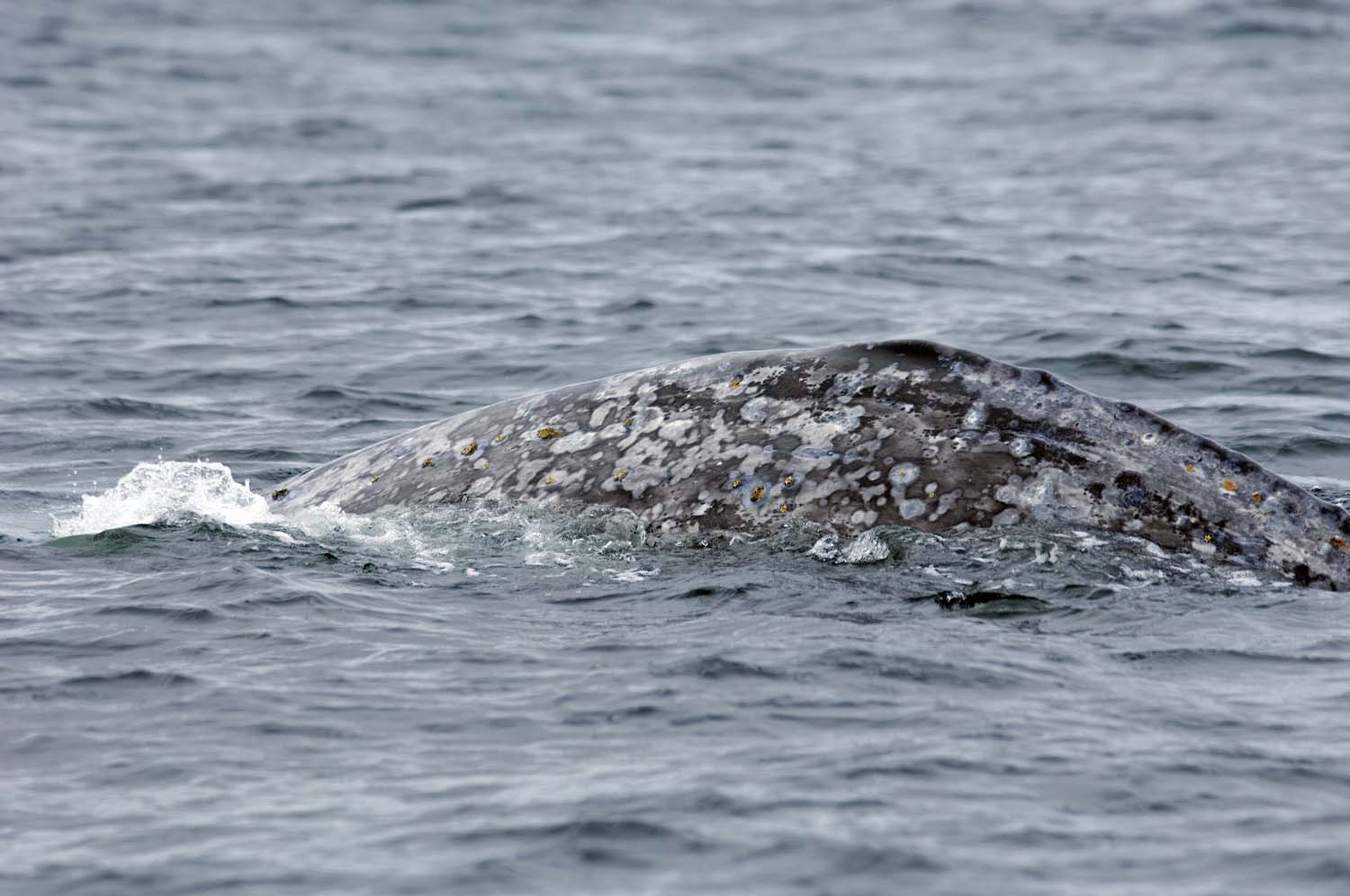
A small sub-population of approximately 100 grey whales in the Pacific known as the summer residents or the Pacific Coast Feeding Aggregation, does not migrate to the main northern feeding grounds, but can be found throughout the summer at varied locations along the coast from central California to Kodiak Island, Alaska.
As we have been seeing this year through reports to our B.C. Cetacean Sightings Network, the first wave of migrating whales appears around March. This group is usually made up of mature males, pregnant females and immature animals. Females with new calves head north a month or two later. For most of their northward migration, grey whales usually stay quite close to the shore past the American states and along the west coast of Vancouver Island.
Research using satellite tags has demonstrated that the majority of grey whales make their way up Hecate Strait before crossing Dixon Entrance and continuing through Southeast Alaska. This was an unexpected result, as before this study, it was generally thought that the whales migrated up the west side of Haida Gwaii.
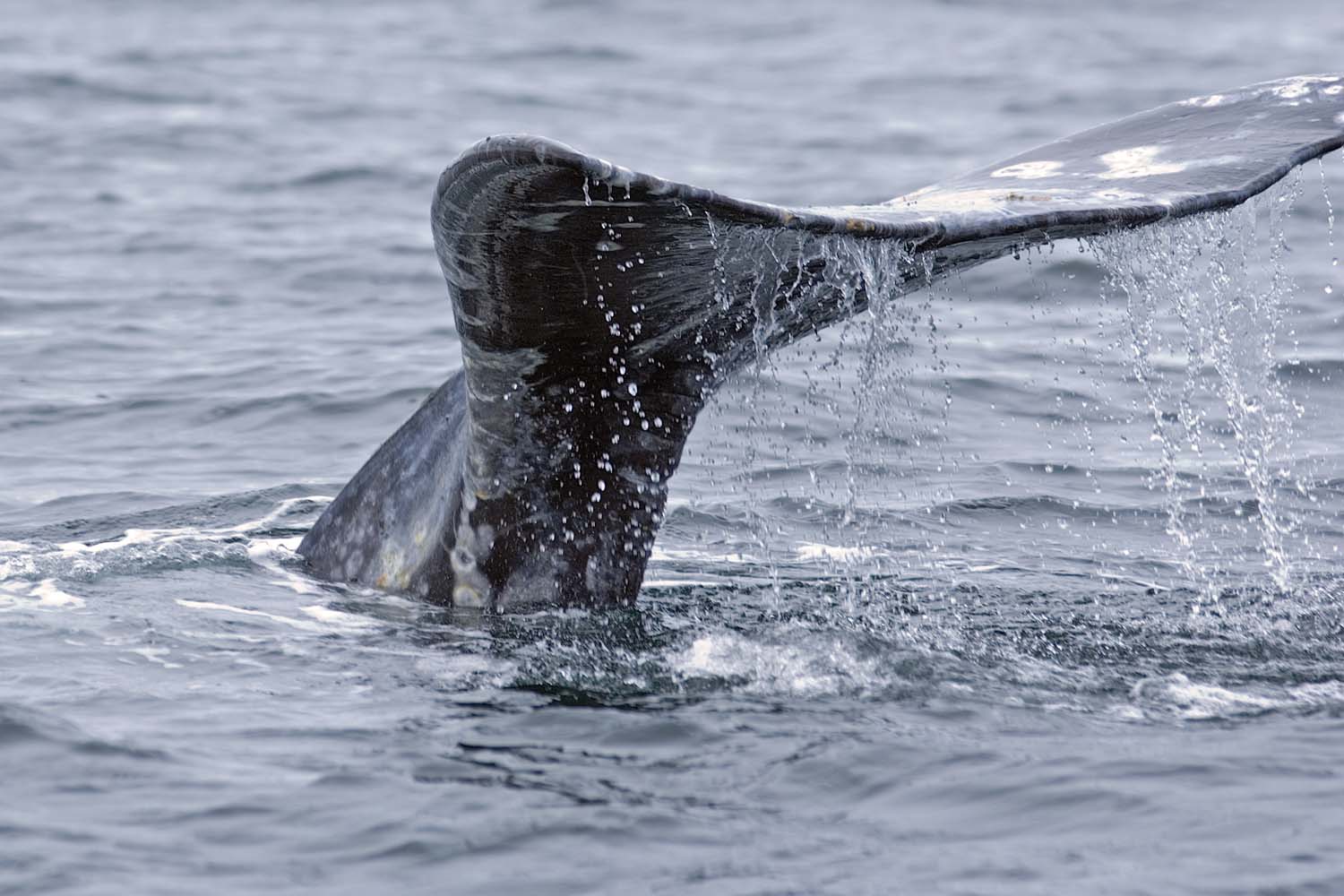
The migration is not without danger. Females with calves remain close to shore and shallow water as a way to avoid predation by Bigg’s (transient) killer whales that will attack young whales. Human-caused threats also impact these whales. Ship strikes, entanglement in fishing gear, pollutants, and underwater noise from industry and development are all issues for grey whales.
This spring, you can help scientists learn more about the migration route of grey whales by keeping your eyes peeled for these wandering whales and reporting what you see. The Sightings Network is studying the population of all whales, dolphins, porpoises and sea turtles in the area to better understand when and where different species spend time locally. You can report your sightings online at wildwhales.org, via email at [email protected], or via phone 1-866-I SAW ONE (1-866-472-9663).
References:
Ford, J.K.B 2014. Marine Mammals of British Columbia. Royal BC Museum. 115-129 pp.
Posted April 20, 2015 by Vancouver Aquarium


